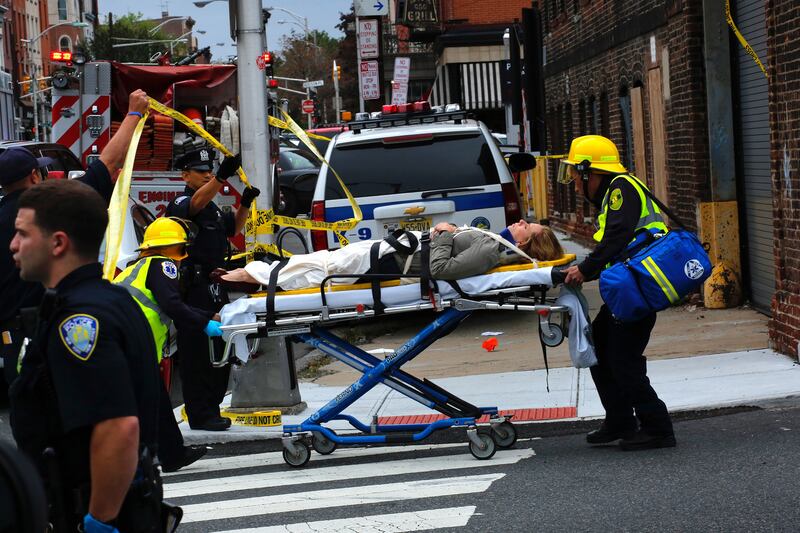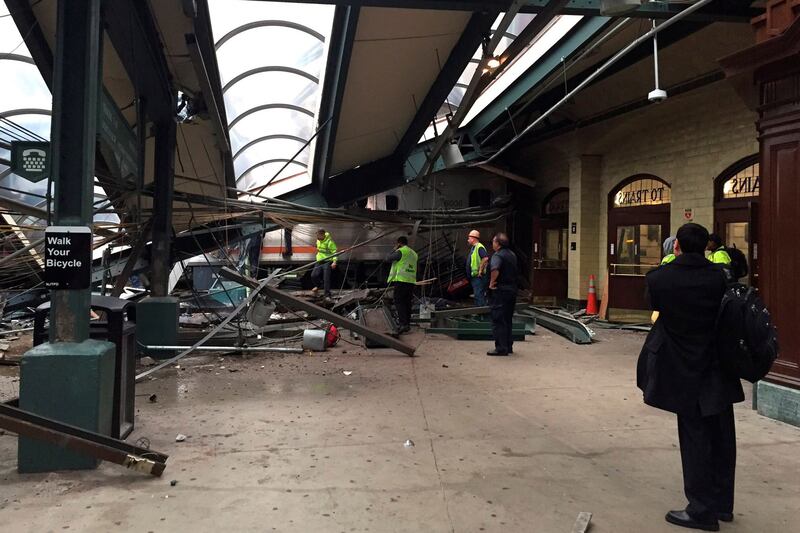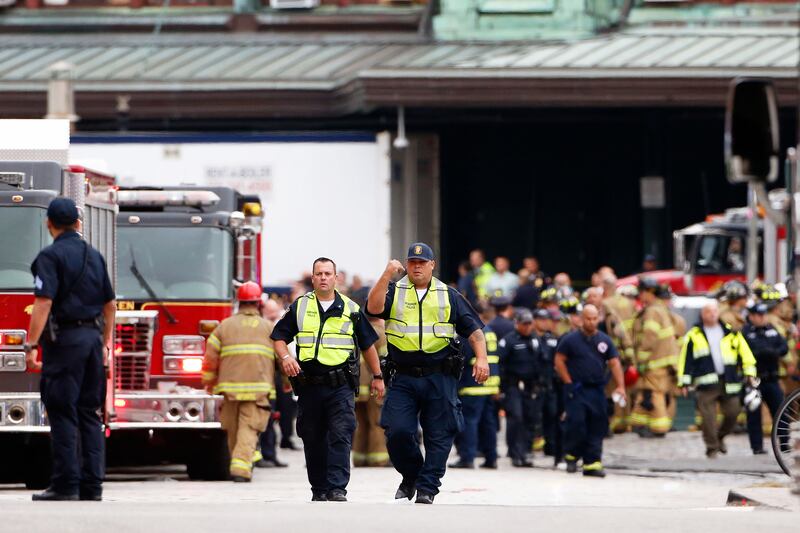At least one person was killed when a New Jersey Transit train crashed into the Hoboken commuter station Thursday morning during the heart of rush hour. The accident injured 114 others, while many passengers were reportedly trapped inside train cars.

The crash occurred just before 9 a.m., one of the busiest times of the day inside the major New York transit hub. Dozens of North Jersey commuters were believed to be trapped inside one of the front train cars, which slammed through inside the station as the train itself was apparently unable to stop. As many as 250 people were on board.
In a statement after the crash, NJ Transit said the train was traveling from Spring Valley, N.Y., on the Pascack Valley Line. It struck the terminal at approximately 8:45 a.m., the rail service said, and confirmed “multiple critical injuries.” According to officials, the individual who was killed—later identified as 34-year-old Fabiola Bittar de Kroon of Hoboken—was standing on the platform at the time of the crash.
#Hoboken #traincrash train hit the station pic.twitter.com/5xteTKLavU
— Leon O (@monduras) September 29, 2016
New Jersey Transit and the PATH train system immediately suspended service in and out of Hoboken. NJ Transit said it was honoring train tickets on its buses, while the New York Waterway ferry also began accepting train tickets at its other New Jersey stations along the Hudson River.
The roof of the station appears to have collapsed where the crash occurred. Police told NBC New York that they expect “mass casualties.” Early reports indicated three people were killed, but officials and various outlets have since reduced that figure to just one confirmed fatality. None of the injuries are believed to be life-threatening.
At a press conference Thursday afternoon, New Jersey Gov. Chris Christie said the train’s engineer—later identified as 48-year-old Thomas Gallagher—was critically injured and is fully cooperating with investigators. Gallagher was released from the hospital on Thursday evening. The National Transportation Safety Board said it was launching a probe and sending officials to the crash site. Christie said there is “no indication that this is anything other than a tragic accident.”
A woman who was on the train told reporters that it never felt like the train was slowing down as it approached the Hoboken terminal. The front cars were “super-packed,” jammed with standing-room-only passengers as it rammed the station. She said she saw a man who she identified as a conductor emerge bloodied after the train eventually came to a stop and screams filled the station.
John Minko, a WFAN radio station anchor who witnessed the crash, reportedly told New York radio station 1010-WINS that the train “simply did not stop.” He added, “it went right through the barriers and into the reception area.”
Another witness told NJ.com, “They were walking out limping, people were helping them, laying them on the ground, that type of thing.”
Bhagyesh Shah, who was a passenger on the train, told NBC 4 New York that the crash lasted “for a couple seconds, but it felt like an eternity” and that the train was “plowing through the platform.”
“I saw a woman pinned under concrete,” Shah said. “A lot of people were bleeding; one guy was crying.”
CBS Evening News executive producer Steve Capus, who said he saw the aftermath, told 1010-WINS that a triage was set up in the area.
“I can tell you there are scores of people here, many of them with bloodied shirts, clothing, head injuries—I saw one person with what appeared to be a broken leg,” Capus said. “They are also bringing more severely injured people out on stretchers.”

The Hoboken terminal sees around 55,000 passengers daily, and NJ Transit itself conducts more than 200 million train and bus trips per year. The Beaux Arts-style terminal on the riverfront is more than 100 years old and underwent a major renovation in the past 10 years. North Jersey commuters jam the train cars in order to transfer to trains and ferries to take them to Lower Manhattan, often standing the train vestibules in order to quickly hop off to sprint to connect to trains on their way to work.

A glass canopy was added to the station during the overhaul, and was seen as adding a perception of open air for commuters skittish after the Sept. 11 terror attacks struck just across the water at ground zero. On Thursday morning, several of those injured were hurt by shattered glass falling from that roof.

The past few years have been peppered with train crashes across the U.S., some fatal, including the May 2015 Amtrak crash in Philadelphia that killed eight people and left 200 injured. In 2013, a Metro-North accident in the Bronx killed four people and injured another 60. But none in recent history have come close to the deadliest train crashes in U.S. history, which include a 1951 derailment caused by excessive speed that left 85 dead in Woodbridge, New Jersey, and a 1918 accident in a Brooklyn tunnel that left 102 dead.
More recently, rail officials have pushed for U.S. passenger systems to add what is known as positive-train control, a technology that can shut down a moving train if safety sensors for speed or collisions are triggered. New Jersey Transit has struggled to install the system—and the train line in Hoboken crash didn’t have it—but has said it would be implemented by 2018.







